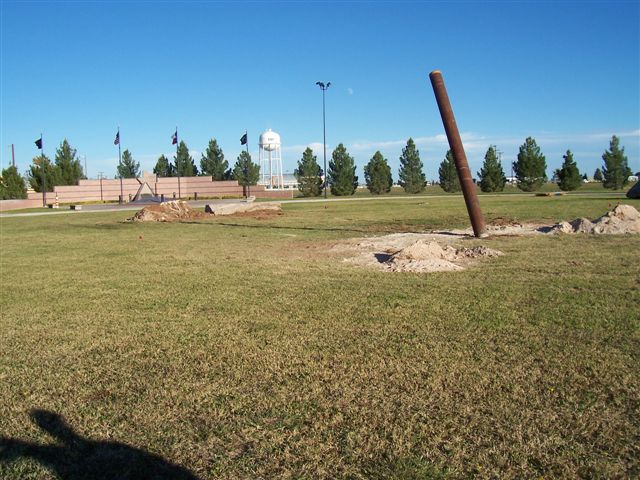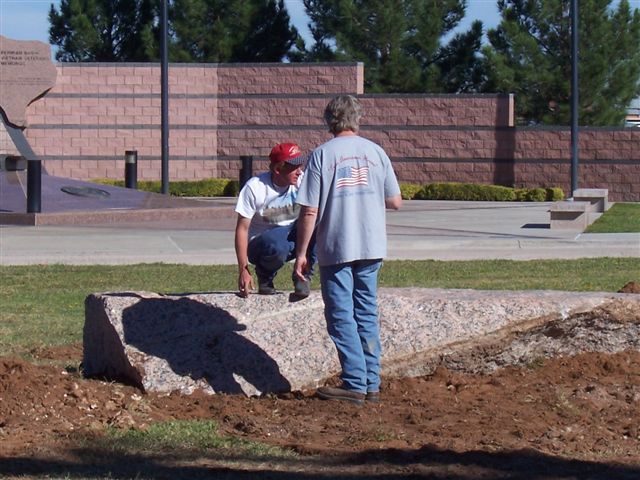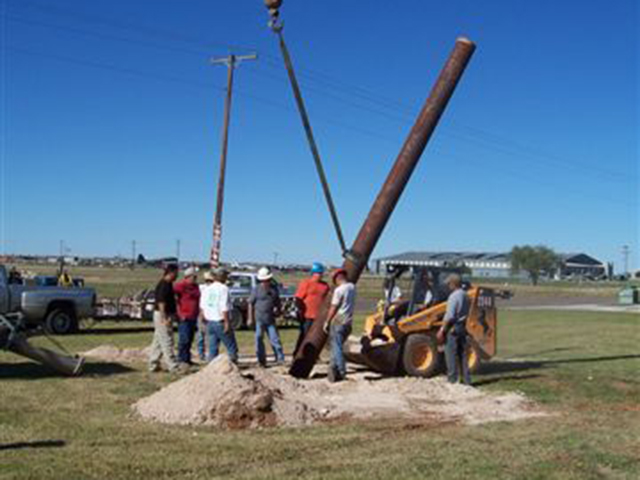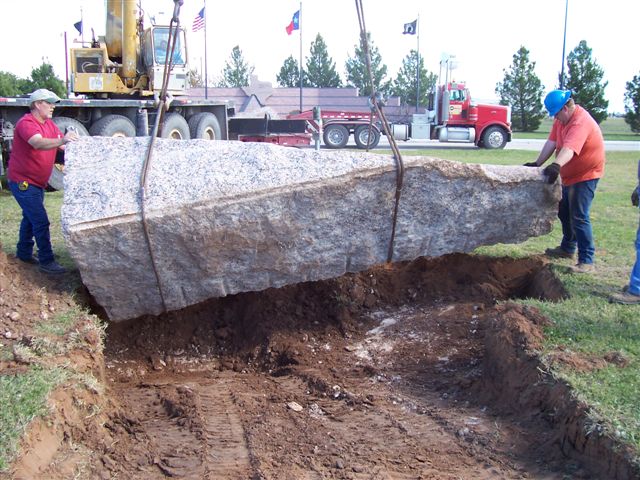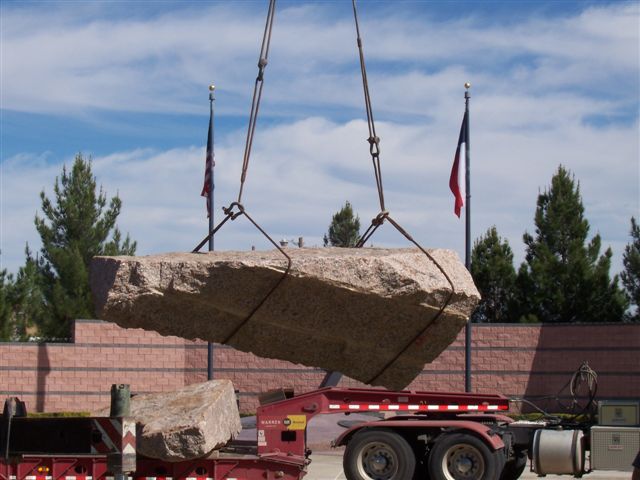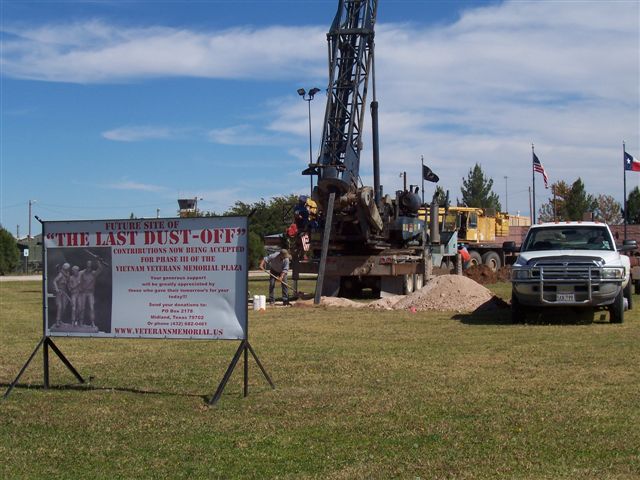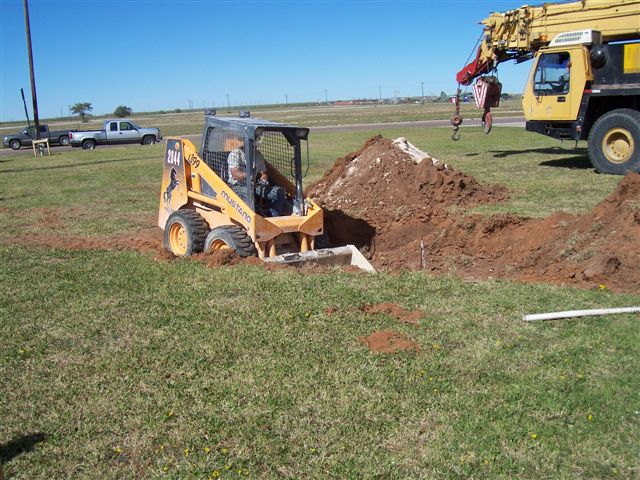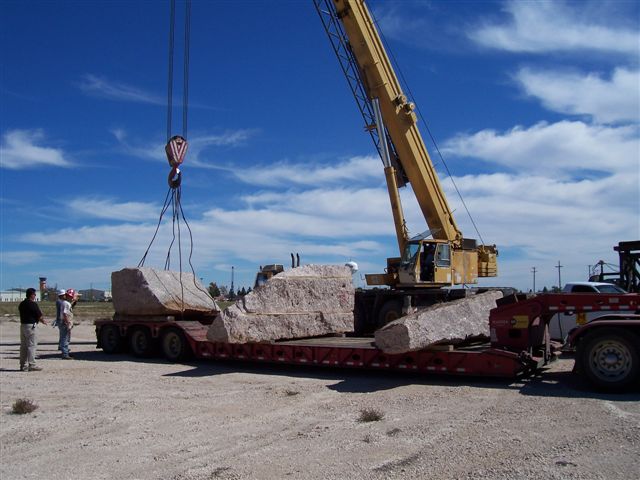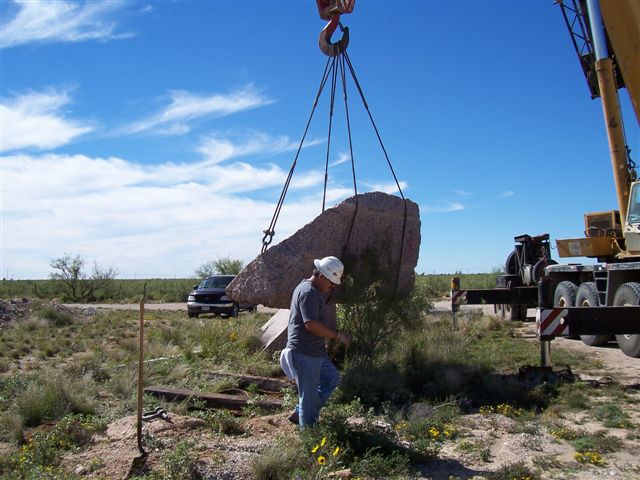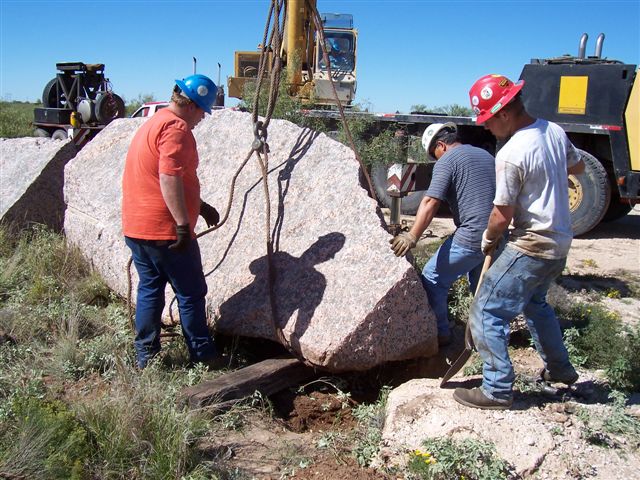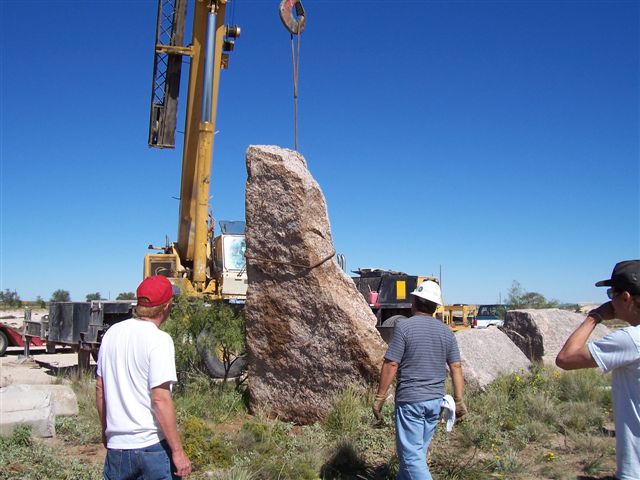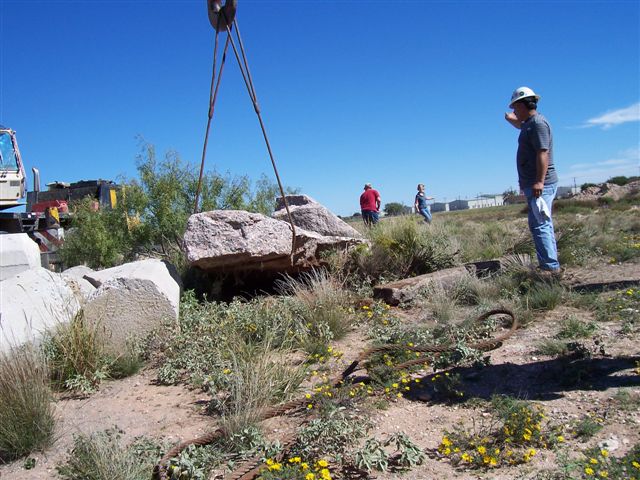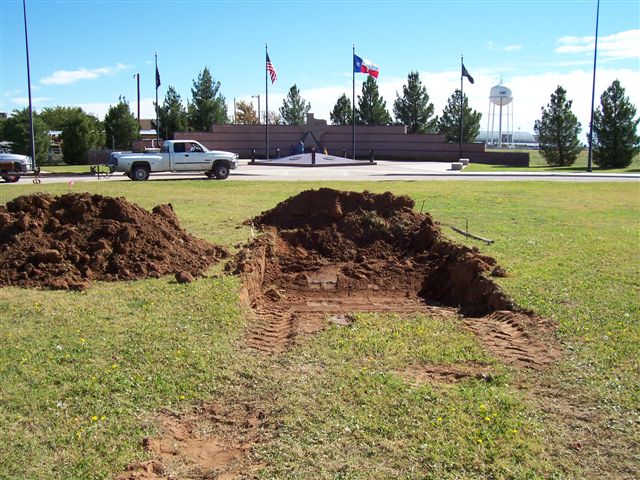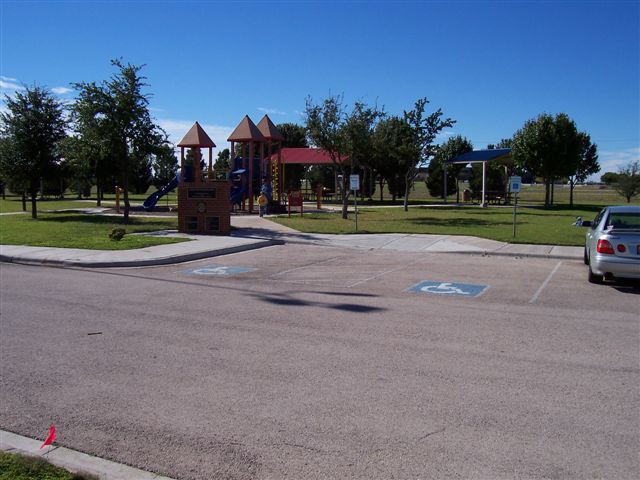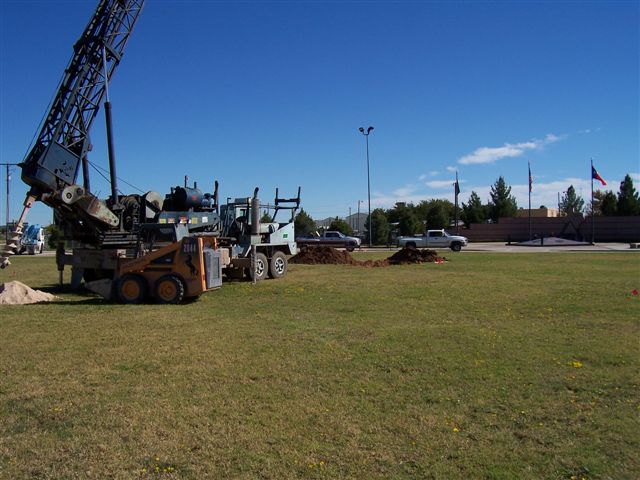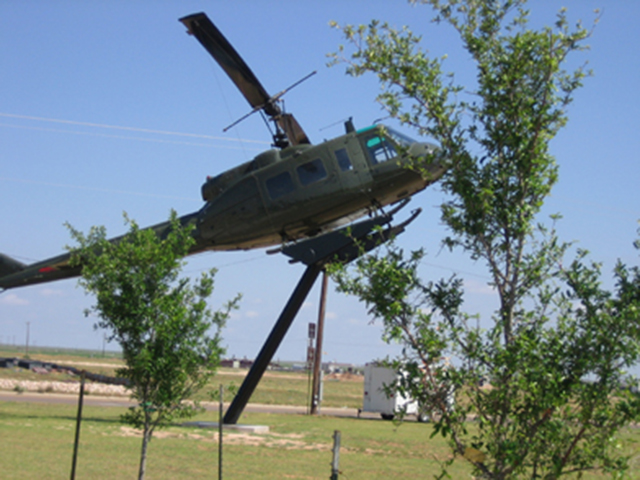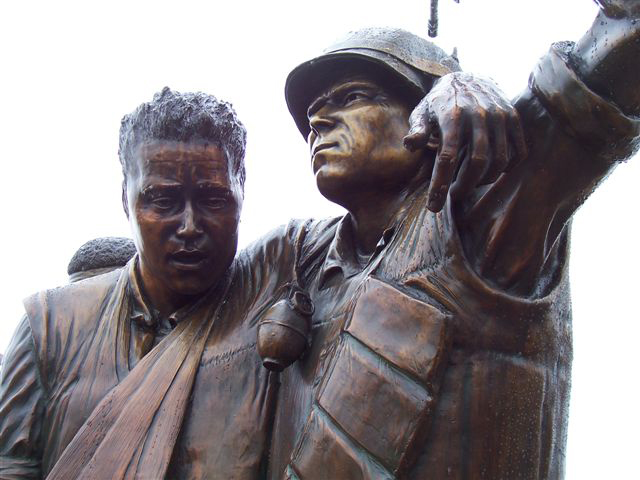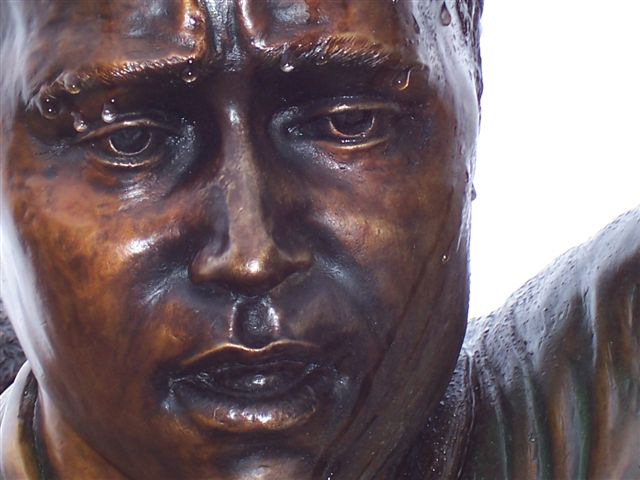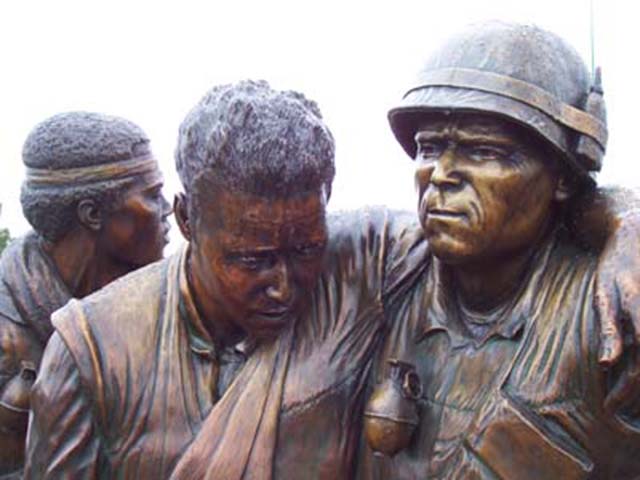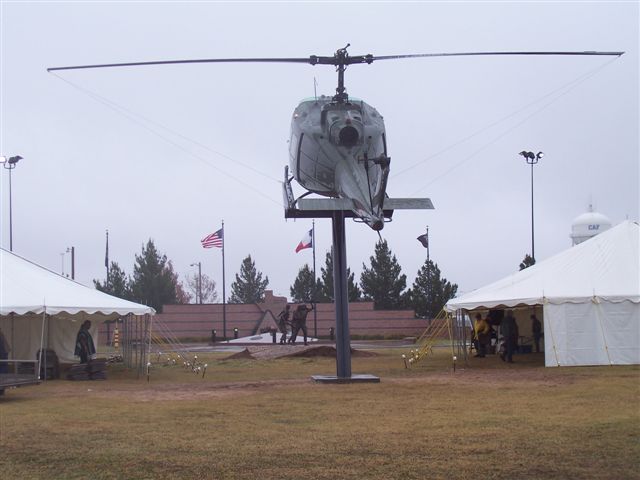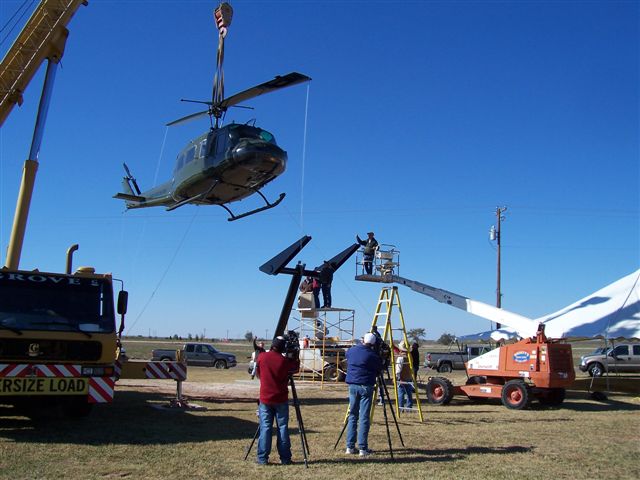About THe Memorial
The Memorial
Our memorial is reminiscent of the wall in D.C. only in that the names of our local veterans are memorialized. The backdrop would suggest hands that cradle the fallen. Implanted in concrete is the Lone Star of Texas and at it’s center is a pentagon that displays the 5 military branch of our United States of America. At the apex of our pentagon is an eternal flame (dedicated November 11th 2002) that displays the fighting spirt of our fallen West Texans. As the point of the star reaches the supportive wall it breaks ground and on its angular surface are the 30 plackets of the 30 counties that our honorees called home. Each name is inscribed in bronze with their name in alphabetical order, their rank and branch of service. As the Lone Star continues it’s upward incline it touch a 2 ton “sunset Red Granite” replica of the state of Texas and on it’s surface is etched the 30 counties that are represented. In large etched black letters are the words “Permian Basin Vietnam Veterans Memorial dedicated to the West Texans in these 30 counties of the Permian Basin Region who sacrificed their lives in the long struggle over Vietnam”. In the circle drive of our memorial is “The Last Dust Off”. It depicts a Huey Helicopter on finial approach to rescue a wounded soldier who is being help to the Dust Off by two of his brothers in arms. One signifies the landing are with a raise M16 in his left hand while supporting his wounded comrade with his right. The other soldier supports from the right with his left hand clutching the wounded soldiers belt all the while looking back in the direction memorial proper, a possible fire fight and our fallen Texans. This all takes place in a simulated rice Patty reminiscent of a daily occurrence. To the immediate south of the Last Dust Off are “Treaty Oaks” that were donated from the Treaty Oak in Austin Texas. To the west is a Rotary Park playground and picnic tables for visitors to enjoy during their visit. Signage directs visitors on all roads that lead to the Midland International Airport.
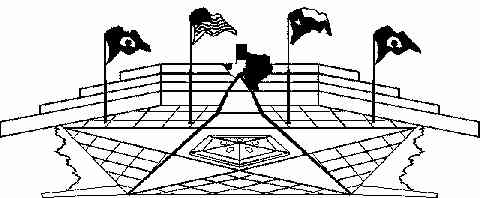
Board of Directors
Ed Anderson
Dick Galloway
Teresa Galloway
Steve A. Dennis
Randy Gilliam
Mike Jackson
Vick Silvester
Bill McNeill
John Philbeck
Jerry Watson
Robin Walker
Mike Snow
Cheryl Snow
Billy M. Brown
Advisory Comitee
Ernest Angelo
Guy McCrary
Mike Barker
Bonnie Petree
Charlie Spence
Elizabeth Rush
Bobby Holt
Clarence Scharbauer, III
Mike Watlington
Jack Sherman
Harry Spannaus
Clayton W. Williams, Jr.
In Honorarium
Melle May
Johnny Ratliff
John Foster
Ed Vogler
Tom Bryant
THE MEMORIAL'S FIRST DESIGNER
Credit for the first design concept for the Permian Basin Vietnam Veterans’ Memorial came from former Midlander Randall G. (Randy) Gilliam, who served in Vietnam in 1969-70.
His first four months there were spent
as an infantry rifleman with Co. C, 2 Battalion, 506th Infantry, 101at Airborne Division. His last eight months he was a helicopter door gunner with Co. B, 158th Assault Helicopter Co., 101st Airborne.
Gilliam came to Midland when he was six and graduated from Midland Lee High School in 1967. He enlisted in the Army that fall. After earning his jump wings, he was assigned to the 8th Airborne Division in Germany. He volunteered to go to Vietnam in 1969.
Among his decorations are the Bronze Star, Army Commendation Medal, Air Medal with 16 clusters, Vietnam Service Medal with four bronze service stars, and the Vietnam Campaign Medal.
Gilliam now is a sales representative for California Optical, traveling North Texas and Oklahoma. Randy has a son, John.

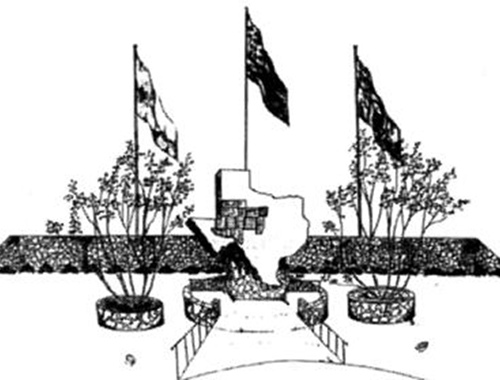
Building the monument
“This is real special for me,” Cecil Davis said with pride as he explained the construction details of the Permian Basin Vietnam Veterans’ Memorial. The Job Superintendent for Campbell Construction Company, the general contractors, Davis is himself a Vietnam veteran. “I feel honored to get to build this. Everything else I’ve ever done has just been a job but there’s something special about this.”
His feelings were glowing in his eyes and showing in his gestures as he explained the scope of the project…much larger on the ground than it had ever seemed in any of the renderings or drawings. A wall which would rise more than ten feet above the ground was just half of that on the hot afternoon in October, 90 days into the project and with just over 30 days left to complete. In the center of the wall is a place for a large outline of Texas with each of the Permian Basin counties detailed. Below that is a sloping area which will have names of those from that area who were listed as killed or missing from Vietnam service.
Davis volunteered for the Marines, leaving for induction in Abilene the day after he graduated from Midland High School in June, 1969. By Christmas of that year, he was in Vietnam serving as part of the security provided by the First Marines for the huge Air Base there. A year later he was back in the states, discharged as a Lance Corporal in 1971 and still not old enough to buy a beer.
“From the time I was in the 10th grade, I knew I was going in the service. It was just something I was supposed to do. My brother was in the Navy, several of my friends were already in the service,” Davis recalled. “I just knew this was something I would do.”
“I remember while I was in high school we stopped eating supper to watch the news on television, seeing the latest from Vietnam. I thought I would see my friends on the news. I didn’t think about the politics or that some thought the war was unpopular. I guess it’s true of young people. I never thought of the danger or the politics.”
When it was over, Davis came back home to the construction industry. His MOS (Military Occupational Specialty) was as a Heavy Equipment Operator. The afternoon he was interviewed, he had been operating a front-end loader. One of his workers joked, “We’re trying to keep him busy on the tractor to keep him out of our way.”
Davis walked around the monument, explaining the five-sided pentagon which will hold plaques of the Army, Navy, Air Force, Marines, and Coast Guard. He pointed out how hidden spotlights would illuminate four flags (United States, Texas, and two POW/MIA) 24 hours each day and how a strip of black blocks would match the black granite that would outline the pentagon. Tan and red granite would pave the walkways or provide background for the bronze plaques. One area was reserved for memorial bricks which have helped finance the memorial which is located at Midland International Airport just west of the Reserve Center and less than a quarter-mile from the Confederate Air Force headquarters.
The memorial for many provides a finality to the last huge conflict for American military forces. “Some of the vets have come out while we have been working on the project,” Davis said. “But we have learned that many more come out at night or on weekends.”
Davis said his Vietnam service didn’t disturb him. “I served, came home, and got on with my life.” But he got very serious when he declared, “We didn’t lose in Vietnam. We did what we were told to do and we did it well. What we really did was get in the middle of a civil war.”
Like most construction projects, it looked like there was no way it would be completed on time. But Davis was resolute in his declaration, “It will be ready on time!”
And, almost hesitantly, Davis confides that he has been asked to answer for some of the fallen or missing troops during a roll call at the memorial’s dedication. “I don’t know them, but I am honored to answer for them.”

